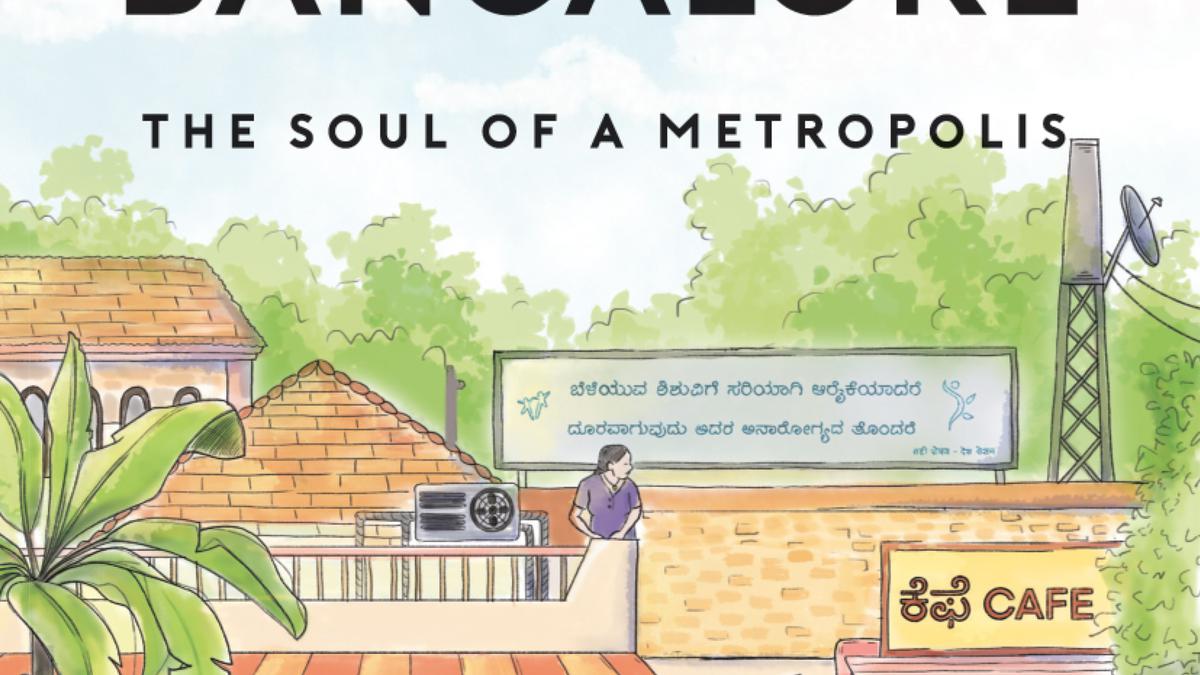
A book that peeks into the soul of Bengaluru Premium
The Hindu
In the introduction to her latest book, Namma Bangalore: The Soul of a Metropolis (Rupa Publications India), Shoba Narayan writes about finding a home in the city. “I didn’t always live here,” writes the Bengaluru-based independent journalist and writer, who grew up in Chennai and lived in New York and Singapore before moving to Bengaluru in 2005.
In the introduction to her latest book, Namma Bangalore: The Soul of a Metropolis (Rupa Publications India), Shoba Narayan writes about finding a home in the city. “I didn’t always live here,” writes the Bengaluru-based independent journalist and writer, who grew up in Chennai and lived in New York and Singapore before moving to Bengaluru in 2005.
Over the years, however, she seems to have forged a deeply intimate relationship with Bengaluru, especially apparent when she talks about what it smells like. Taking off from the late Palestinian poet Mahmoud Darwish’s evocative tribute to the smells of various cities, she writes, “Bangalore is the smell of red earth and falling rain; of open drains and clogged leaves; of start-ups and swalpa adjust madi,” she writes. The city also holds the scent of sweat and enterprise that seeps through the skin, mingled with spices and cigar smoke “occasionally unpleasant but certainly unmistakable,” she adds in that same introduction.
Narayan’s remarkably generous assessment of the city continues through Namma Bangalore: The Soul of a Metropolis, a book that defies definition. “It is a service-oriented book,” she says of this collection of Bengaluru-centric essays, peppered with personal histories, wry observations, and insider insights, almost like a friend offering you a tour of the place they call home. “I think it is a decent primer on Bangalore,“ says Narayan, who launched the book, her sixth, last month.
From a column to a book
Narayan began chronicling Bengaluru around three years ago, capturing the facts, facets, and vibe of the city in a column she writes for a national daily. Many of the essays and ideas in this book first emerged in the column, which was then rewritten to suit a book format. “There was an extensive rewriting to see if something eternal could be salvaged from the columns. A column has to be timely, while a book needs to be timeless,” says Narayan, who firmly believes that the city deserves more books about it than it currently has.“
The various essays in the book are then subdivided into multiple sections, each addressing specific aspects of Bengaluru: from an overarching discussion on what the city of about, to a deep dive into the city’s vibrant food and drink culture, its obsession with nature and wildlife, its attitudes towards wealth and even a section focusing on of some of the people who define Bengaluru, including actor Puneeth Rajkumar and writer Kota Shivarama Karanth. “Like many writers, I make sense of a city by writing about it,” says Narayan, who says that the column, and later the book, forced her to engage with the city in a non-superficial way. “It made me curious about things I normally would not have and deepened my relationship with the city.”
The actual process of putting together the book—from ideating to release—took around 9 months, “about as long to give birth”, quips Narayan, who brainstormed extensively with her editor, Dibakar Ghosh of Rupa Publications, to arrive at format and structure of this book. She admits that she is thrilled with the final product and the city’s reception of it. “It is in the second printing already. This book really seems to resonate with Bangalore,” she says.













